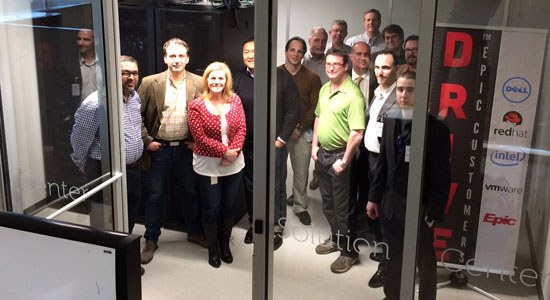 Making changes to a healthcare organization’s clinical applications is a task fraught with risk. While you can test your ideas and improvements in a lab, there aren’t many places where you can set up real-world environments to fully work out the bugs before you go live.
Making changes to a healthcare organization’s clinical applications is a task fraught with risk. While you can test your ideas and improvements in a lab, there aren’t many places where you can set up real-world environments to fully work out the bugs before you go live.
That’s an important reason that the healthcare system has seen so many electronic medical records (EMR) implementation disasters over the past two decades. With no way to do a real-world test before going live, many hospitals and clinics discovered flaws in their implementations only when real doctors and nurses started using the applications. Usually the error lay not in the application itself, but in the complex matrix of factors associated with the application – data center, network, end-user devices and clinical workflows. In the web-like system of interactions required in modern healthcare, anticipating every detail is hard. Testing in the real world is the only way to know what mistakes you’ve made ahead of time.
That’s why Dell created its DRIVE Center of Excellence. As part of the Dell Solution Centers, the facility has the ability to test a wide variety of configurations under real-world conditions. Prior to going live with a new implementation or a change to an existing system, hospitals and clinics get a chance to test their designs for flaws. If, for instance, your clinicians want to use a new tablet to access the EMR, you can test those end-user devices in an environment that mirrors the platform you are using in your facility. Or if you want to test some new hardware settings that you think will improve performance or a change to the application itself, you can do that at the center.
The center also houses the support team for the DRIVE solution. DRIVE stands for Dell, Red Hat, Intel, VMware and Epic, the alliance of tech companies that began the collaboration to bring an open-source, Linux-based version of Epic to market that was affordable for smaller hospitals and clinics. Dell strengthened the alliance with the addition of Sphere3D, Agfa, Symantec and Hyland OnBase, creating the DRIVE Plus solution.
There are also many opportunities at the DRIVE Center of Excellence for Epic users to share best practices, attend technical workshops and collaborate on new ideas to make the system even better. But the real game changer for IT professionals who manage Epic systems is the ability to do robust testing prior to deployment. For the doctors and nurses who use the systems, that testing ability also means smoother sailing while they care for the people who really count – the patients in need of their care.
The Dell DRIVE Center of Excellence is located near Epic’s Verona, Wisconsin campus, and is designed to support healthcare customers migrating to Epic’s more open Linux-based target platform, as well as new customers deciding to implement Epic software on Linux for the first time. For more information, email the team at DellforEpic@dell.com.
